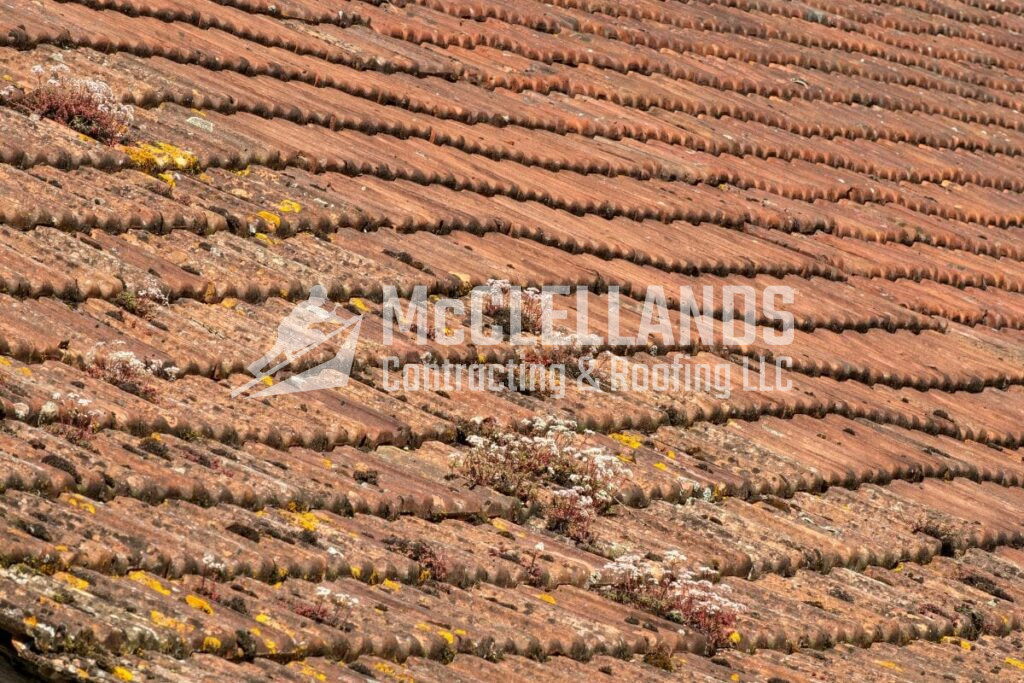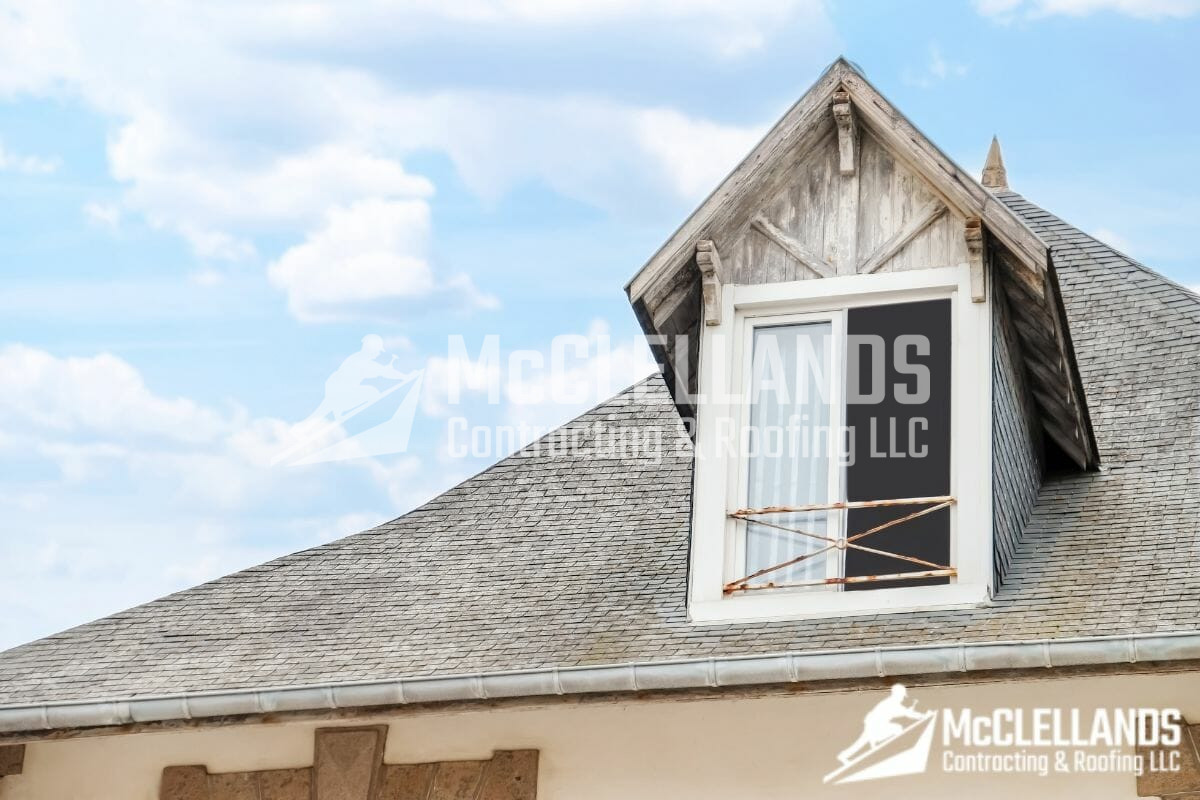A roofing system is built to last and keep your home protected from the different forces of nature. It plays a crucial role in keeping you and your home safe from rain, storms, and other severe weather conditions. There are times when the weather is so bad that even the best of the roofs tend to get damaged. One such issue that you can face is a sagging roof.
A sagging roof is a common problem for older homes. While there are many reasons why this can happen, it is important to know how to tell if you have one. In this blog, you will get to know about what causes a sagging roof and what you can do about it.
What Is A Sagging Roof?
When a new roof is built, it has a straight, upright structure. However, as time passes and your roof faces harsh weather, it can be compromised, and your roof tends to sag. A sagging roof is a condition where the roof of a building has settled over time, causing it to dip inwards towards the middle.
The weight of the roof will cause the center to sag and bow outwards. A sagging roof will have a wavy appearance, and it cannot hold much weight. This is a problem that is very common in older homes.
Causes Of Roof Sagging
If you’ve ever noticed your roof sagging, it’s probably time to get it repaired by a professional roofing contractor. Even though it is not a topic that we talk about daily, it is still of huge concern. A sagging roof can be a sign of an underlying problem that needs to be addressed immediately. Here are some common causes:

Damage From Water
One of the most common causes of the sagging roof is water damage. Water damage can be caused by poor maintenance or poor ventilation, and it can lead to more serious problems if not treated immediately.
Water damage is one of the biggest reasons why people need to repair or replace their roofs. If your roof and the gutter systems are not doing their job properly, i.e., are not able to divert rainwater away from your property, then it could lead to water buildup.
The more water that accumulates on your roof, the more likely it will be for moisture buildup as well. This moisture will result in mold and mildew growth that causes the roof to deteriorate further over time.
Heavy Weight That Pulls Down The Roof
The weight of the roof is the most common cause of sagging, and if a roof is too heavy, it will sag. This is an important fact that homeowners need to know. You might be wondering, how does a roofing system become heavy? Well, one of the reasons is the snow buildup.
Heavy snow on the roof or heavy rain can cause your roof to sag. If you live in an area that receives a lot of snow, it is important that you pay close attention to your roof. It’s also important to keep an eye on the weather so you can remove snow or ice when it becomes too heavy.
Age Of The Roof
As we already stated above, most cases of sagging roofs occur in roofs that are past their lifespan. No matter which roofing material you decide to install on your roofing system, they all have a specific lifespan. After a certain point of time, a roof will start to show signs of damage/aging, and you will need to replace your roof.
Most roofs start out with a steep pitch so that rainwater will run off them easily. As time goes on, however, the asphalt or wood used in the shingles starts to break down and lose its rigidity. This means that when it rains, your roof may not be able to hold up all that water anymore. This is why you should always replace your roof before it’s too late.
Faulty Installation
Poor installation is also one of the most common causes of sagging roofing. When a roofer installs a roof incorrectly, it can cause all kinds of problems in the future. For example, if the roof is poorly installed, it can lead to leaks and water damage. To ensure quality installation services, make sure you hire a professional roofing contractor. You can check out our blog, in which we have shared tips on how to find a good roofing company in Pittsburgh.
If the roofing materials are not installed correctly, they wouldn’t be able to stand up to weather conditions or the weight of snow. This can cause your roof to sag. In addition to the quality of the installation, the quality of roofing materials play a big role in determining the quality of a roof.
To What Extent Is A Sagging Roof Acceptable?
Many homeowners now face the problem of a sagging roof and often ask the question, how much is acceptable?
A sagging roof is a problem that should not be neglected, and this problem can indicate that there can be several other issues with your roof as well. This is why even if your roof is sagging a little bit, it should be checked right away.
Other Signs Of Roof Damage
If you notice that your roof has started sagging, then there is something wrong with it, and it needs to be repaired immediately. However, a sagging roof is not the only issue that you need to worry about. Here are some other things you should watch out for that can indicate you need roof repair services:
-A leak or stain on your ceiling. This is a sign that there’s water damage to the inside of your home and/or rust on your roof.
-Your gutters are clogged with leaves. If leaves have accumulated on top of your roof, and/or you see signs of animal infestation (such as droppings), your roof may need to be repaired.
-You notice that the shingles on your roof are curling up at the edges or that there are exposed roofing nails sticking out from between them.
How To Maintain Your Roof?
A roof is one of the most critical parts of your house, and it protects you from severe weather conditions. It is important that you properly maintain and care for your roof, so that it will last for years to come. Here are some tips on how you can maintain your roof:
- Roof Inspection: Thoroughly inspect your roofing system at least once or twice a year. This will help you to catch the issues earlier.
- Routinely remove the snow from your roof to avoid the formation of ice dams.
- Unclog your gutter systems and keep them clear of leaves, twigs, and other debris.
- Check the attic area and make sure it is properly ventilated.
Contact Us
If you have a sagging roof, it’s not something you want to ignore or try to fix yourself. While there are ways in which sagging roof repair can be done, this can be dangerous and costly. Instead of putting yourself in harm’s way, let a professional roofer assess your home and let them know if a sagging roof could be causing damage inside your home.
At McClellands Contracting and Roofing LLC, we have an experienced team of professionals that can effectively take care of your roof. We offer the best roof replacement and repair services in Pittsburgh and surrounding areas.
If you notice that you have a sagging roof or any other roofing problem, no matter the size, all you have to do is call. Contact us today at (412) 353-5660 to get started.

